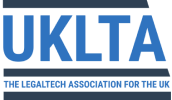Legal operations of all sizes are experiencing an evolution of sorts that is drastically how they operate. With organizations embracing digital transformation many are moving to automate many of their functions with technology: document management, contract management, workflow automation, and electronic signatures.
A quick Google search of legal trends and you’ll find a plethora of news and information highlighting the benefits and features of legal technology.
What is considered legal technology? Simply put, it includes any digital tool used to enhance and automate legal operations. Now critical to any legal operation, legal technology is helping to improve efficiency and control, especially with contracts; the complexities are unique and volume growing.
Take a quick look at how your legal operations can embrace digital transformation with legal technology – avoid the risk of falling behind advancement and stay one step ahead of the competition without losing value for your clients.
* * *
Electronic Signatures Are Enhancing Remote Legal Operations
There’s no doubt that the capacity for organizations to support remote operations has proven essential. Many are managing contracts electronically to improve and evolve.
There are many tools to consider, but one that has taken off and leading the way for improving contract management is Singrafii, and it offers:
- A secure, centralized, all-in-one platform for storing and safeguarding documents.
- An easily integrated and intelligent contract workflow automation.
- An extensive audit trail.
- A compliance-approved solution that’s legally binding.
In partnership with Singrafii, RBRO Solutions is integrating the electronic and video signing room solutions into the iManage platform. An exceptionally effective way to support remote singing and collaboration, Syngrafii iManage Link provides enhanced remote signing of documents that deliver security, authentication, and compliance for iManage.
Syngrafii iManage Link is a seamless, cloud-based integration of Syngrafii’s iinked Sign™, Video Signing Room™ (VSR™) and iinked Seal™ (remote online notarization) product suite into the iManage platform.
Learn more about Syngrafii iManage Link.
* * *
Top Tech for Legal
A recent Bloomberg Law survey of 190 law firms and in-house attorneys (2022 Bloomberg Law Legal Operations and Technology Survey) found that legal technology is improving the services provided to clients. The survey also touched on the barriers legal operations faced when using the technology and the improvements they feel are needed.
Legal technology is now considered decisive for meeting client demands. Some of the numbers of the survey:
- Almost 9 of 10 attorneys reported that legal technology improves the services they provide to clients and is crucial to meeting client demands.
- 79%: Of the 32 listed legal technology tools their organizations are currently using, the largest share of survey respondents reported using billing tools.
- 70%: Legal research tools.
- 69%: Electronic signature solutions.
Globally, the digital signature market is expected to reach US$20.4 Billion by the Year 2027. According to a new report, the “Global Digital Signature Industry” and amid the COVID-19 pandemic, the global market was estimated at US$3 Billion in the year 2020 (in the U.S. is estimated at US$1.2 Billion). Now it’s projected to reach a revised size of US$20.4 Billion by 2027, growing at a CAGR of 31.4% over the period 2020-2027.
Among the other noteworthy geographic markets are Japan and Canada, each forecast to grow at 25.8% and 27.2% respectively over the 2020-2027 period. Within Europe, Germany is forecast to grow at approximately 28.3% CAGR while the rest of the European market (as defined in the study) will reach US$1.9 Billion by the year 2027.
* * *
A Few Considerations
As with any industry, legal operations face several barriers to unlocking the full potential of legal technology. This is likely due to a lack of technical proficiency among legal professionals.
A lack of tech-savvy skills and familiarity with technology tools used at their organizations, if unaddressed, can create a skills gap and will only worsen as legal tech advances, ultimately hindering lawyers’ ability to keep up with innovation in the legal profession.
There are so many tools that can be used by any legal operation. This may come as no surprise since these tools have been fairly integrated into legal practices for some time. And some of them, are typically introduced to students during law school before they even begin practicing.
Why would an organization use technology?
- Improve productivity.
- Improve workflow.
- Meeting client or organizational demands.
- Improving the quality of work.
Organizations are shifting to electronic signature solutions to reduce the risk of legal disagreements and provide more substantial evidence.
With exceptional data security of sensitive information and as a result of the e-commerce and online banking boom, companies need to secure their networks to gain customers’ confidence. This requirement has led to greater and faster adoption rates of electronic signatures, which act as the sender’s seal of authenticity over any electronic document.
With the increasing demand for modern, convenient methods for entering binding transactions, electronic agreements and signatures have gained momentum in recent years.
Technological advancements are leading to the evolution of executing documents.
Are you ready to adopt a digital signature solution to help your wide range of document processing and automation capabilities? Let’s chat!
